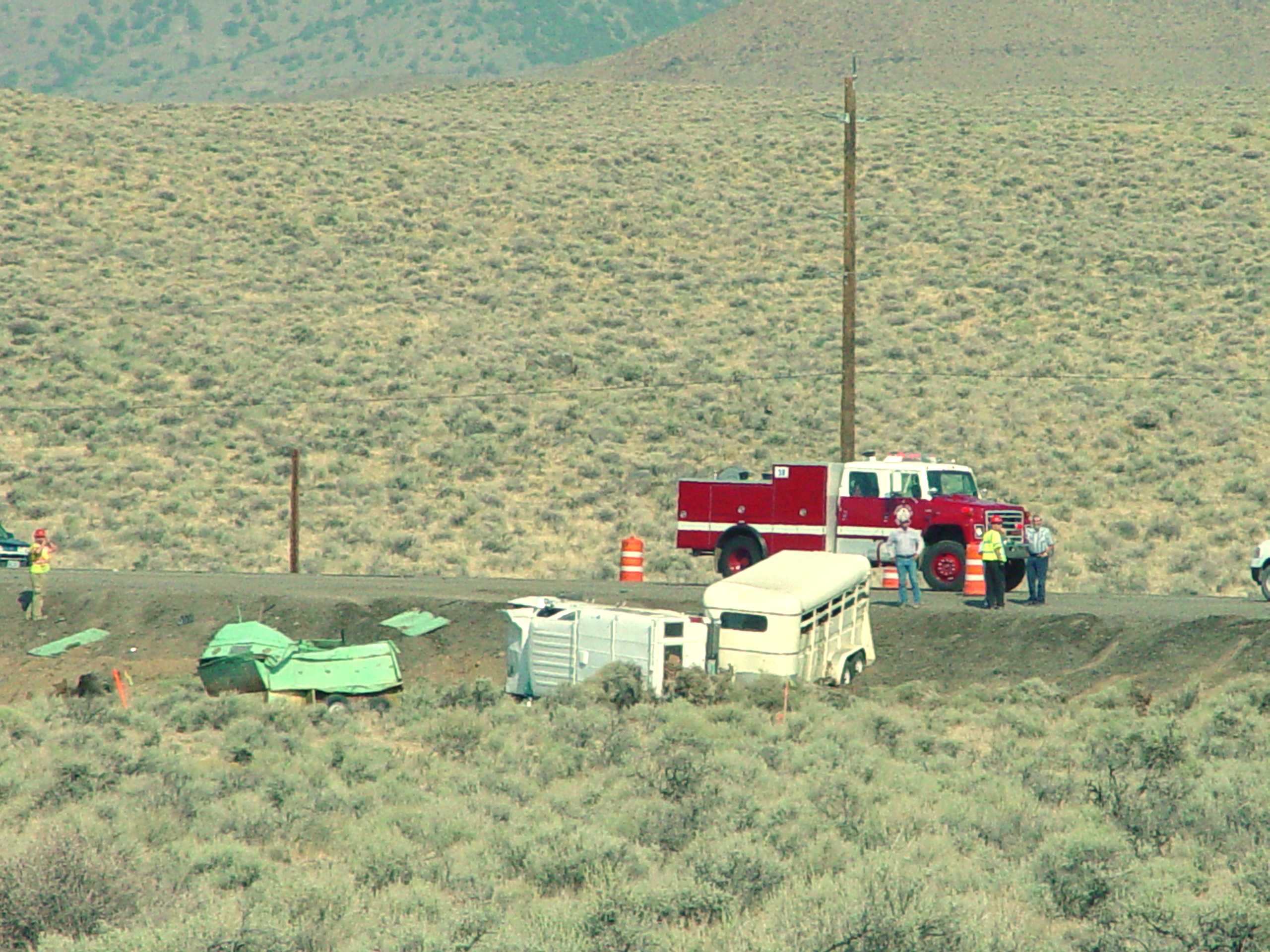|
|
|
KBR / LRTC Survival School
TRAILER SAFETY, PART TWO
|
This feature is a continuation from Part One.
|
|
TOWING A HORSE TRAILER -
WHAT SUPPORT YOU NEED
|
We haul a lot of horses and livestock. We haul in all kinds of weather and road conditions. As a result we have learned what works and what doesn't.
Extreme hauling. Two tow vehicles required to bring loaded trailers up through the snow.

We were recently provided with an article produced by
SD Truck Springs that clearly explained some of the technical, loading and load support considerations when towing. They kindly gave us permission to reproduce their piece in our safety section. There are links provided that go to their site for more specific information.
Towing a Horse Trailer - What Support You Need
Background
When towing a horse trailer there are many things to be considered to ensure the safety of your truck, trailer and horses as well as yourself and any other passengers. There are certain guidelines that must be followed when towing a horse trailer; you must have at least a Class III or Class IV receiver hitch with each part rated to match the GVWR of the trailer. Also, the frame of the trailer must be inspected for cracks and loose wires and connections, all hinges and hitches should be greased and there should be no rust on the hitch or trailer. Following these guidelines will improve your safety when towing however there are other aspects to consider.
» See more on hitch receivers.
Towing horses can add a lot of weight to your vehicle, and even though your weight is within the GVWR you may experience sagging from the weight sacrificing the quality of your ride and making it more difficult to tow. By the simple addition of level load support such as air bags or helper springs you can reduce sag, sway and bottoming out and increase safety conditions for you and your horses.
» See more on helper springs vs. airbags.
General Rule of Thumb
All kinds of trucks are used for towing horses, when picking a truck to use for this purpose there is a general rule of thumb; for a 1 horse trailer a 1/2 ton truck will do, if you have a 2-4 horse trailer you will need a 3/4 or 1 ton and any trailer above a 4 horse you will need a heavier duty vehicle like an F450.
(Webmaster's note: To be certain of your truck's towing capacity check the rating on the sticker found on the inside of the driver's door jamb and allow some reserve between your vehicle's tow rating and the load that you are towing.)
Air Bag Kits
There are many different options for load support when towing a trailer Air bags are usually the more popular choice choice; since B & W gooseneck hitch is often used for towing 2-Horse to 6-Horse trailers you will need to get an air bag kit designed to install with the gooseneck hitch.
» See more on B&W gooseneck hitch.
Helper Springs
Another option to look into for load support while towing would be Hellwig Helper springs. These are not as versatile as Air Bags, but they provide you with up to 3500lbs of support and will work with in-bed hitches. You can get helper spring models that will automatically adjust to your load so when you need them they will engage, but when unloaded your ride will go unaffected. Many people enjoy the helper springs since they are easy to install and have no air pressure to maintain.
Timbren SES
Timbren Kits are also a preferred choice for towing. With a Timbren SES kit there is zero maintenance and your unloaded ride will be the same as it is now. Timbrens replace your stock bump stop and sit 1-2” about the axle, once your hook on your trailer and load your horse the Timbrens will make contact with the axle and prevent you from sagging. Timbrens offer up to 8600lbs of load support and can be easily installed with or without an in-bed hitch and forgotten about.
» See more on Timbren SES.
When towing a horse trailer you also need to keep in mind the GVWR of the vehicle. Even with the added support of helpers you cannot exceed the GVWR. With a gooseneck setup you can approach your vehicles maximum capacity very quickly so be careful when choosing your truck and trailer. If you are following all of the safety guidelines for towing and still experiencing sagging in the rear adding airbags, helper springs or Timbrens will do the trick.
For more information including applications for various tow vehicles, please visit the
original document.
Excessive loads for the trailer and tow vehicle are believed to be
the cause of this highway accident that resulted in four human fatalities.

Email the author
Return to Safety Main Page
| 
